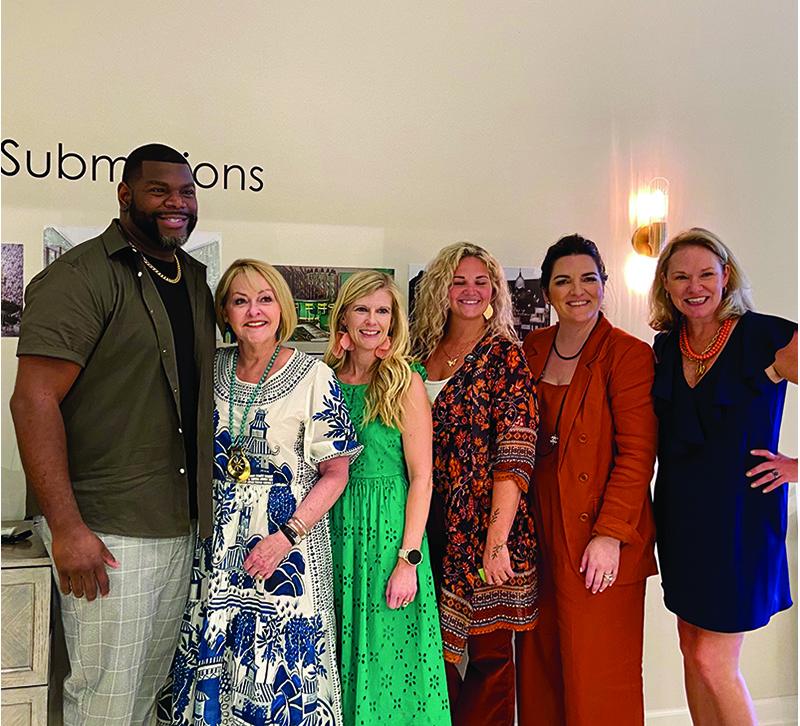High Point Market last month showcased the power of the market environment, with trending and new products, educational and inspirational experiences, attendees and the energy we remember from before COVID. As retailers, there’s more to gain from these market experiences than just writing orders for new products.
You can leverage your market experience in real time, because you come back with information and insights your customers and your community haven’t yet accessed. Beyond rekindling supplier relationships and planning stock for your store, markets are an opportunity to increase customer engagement.
Have you ever considered how your market experiences might resonate with your customers and help you attract new ones? Not only do you have the unique opportunity to see new products months ahead of your customers, you’ve also built relationships with the suppliers. The knowledge you gain from the conversations you have can position you as the home furnishings expert in your community if you share what you’re learning. Market can provide you with content to share with your sales associates, your community and ultimately, your customers.
Content is king, says James Fleming, CEO of Camelot Group. “Attend trade shows through the eyes of a magazine editor,” he notes. “One of the most valuable things you can come away from a market with is six months of content.”
What type of content do you want? That depends on what you’re using it for. You want to focus on eye-catching content you can use across social media platforms, trendy tidbits to use as blog posts and send out in newsletters, and even something a little more in-depth about your market experience to send out local press releases.
“Retailers need more traffic coming through the doors,” says Fleming. Sharing engaging content is a surefire way to do that. He suggests going beyond just what’s new and trending as you peruse showrooms. Talk to your suppliers about what’s selling best right now. New product is often months out; customers coming in today want to know the products that are available to them today. Learn about your suppliers and share their stories. What is your furniture dealer’s unique selling proposition, for example? What’s the founder’s story? Sharing these stories can create a personal connection for your customers. It’s no longer just about a product; it’s about people they might relate to.
Take good photos in showrooms — of product, of merchandising, of people, of the experience. Not only is this share-worthy, as you browse your photos, it can help you remember and even recreate some of the unique merchandising that may have piqued your interest. Fortunately, most phones have good cameras. Use the photo editing on your phone, too, to make your photos clear, intriguing and Instagram-ready. We’re not all professional photographers, but taking good images will help your content resonate. You can also ask vendors for professional photos.
If you’re not comfortable asking for stories or taking pictures, consider bringing along someone in your organization or community who is more comfortable — your social media manager, a local designer or influencer.
Share Your Experience
Once you have your content, how do you share it and who do you want to reach?
There are the usual outlets — social media, newsletters and blogs. However, Fleming suggests you get creative and gain an even broader reach by sending a press release to your local media, including shelter and lifestyle magazines. Make it about your experience, so your community can experience a market through your lens. “Send your press release to local news affiliates too,” Fleming says.
“You might get a couple who run it or want to interview you. That’s valuable publicity.”
If you’re asking vendors for stories, share those each month. Let your vendors know what you’re doing and then follow up after market.
Share content with your sales associates and get their perspective. “If you’ve seen 100 products you want but can only buy 30, present them to the staff and let them weigh in,” says Fleming. “When you involve your sales team in purchasing decisions, they’ll have ownership, and they’ll actively promote those products.”
hose products.” Markets should be about more than buying product. “They give you an arsenal of materials to come back to your stores and get your staff, your pro community and your influencers excited,” says Fleming. “These materials can reinforce you as the expert on home furnishings and help you do a stellar job engaging your associates, design community, local media and, of course, your customers.”







